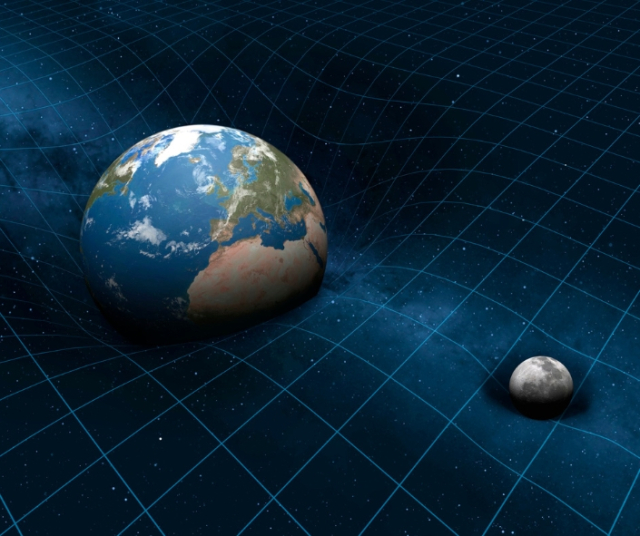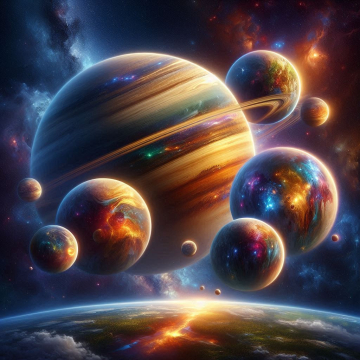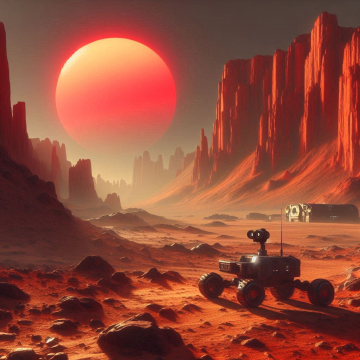The moon, our closest celestial companion, captivates us with its presence in the night sky. However, there is a fascinating and seemingly contradictory phenomenon: we always see the same side of the moon. Over the centuries, this enigma has intrigued astronomers, scientists, and astronomy lovers. In this article, we will unravel the mystery behind why the same face of the moon always watches us from space.
Synchrony of Rotation and Translation: Dancing in Harmony.
The key to understanding why we always see the same side of the moon lies in the relationship between its rotation and translation. The moon has two main movements: rotation, which is its spin around its own axis, and translation, which is the movement it makes in its orbit around the Earth. However, the moon presents a unique synchronicity between these two movements.
The Phenomenon of Synchronized Rotation.

The moon is "locked" in what is known as synchronized rotation, meaning that its period of rotation around its axis is equal to the time it takes to complete one orbit around the Earth. This phenomenon leads to the same face of the moon always being directed towards the Earth, creating the illusion that it is motionless in the night sky from our Earthly perspective.
Gravitational Interactions: Modeling the Celestial Dance.
The gravitational force between the Earth and the moon plays a crucial role in this phenomenon. As Earth's gravity acts on the moon, it generates tidal forces that affect its internal structure. These tidal forces act as brakes, gradually slowing the moon's rotation speed until it synchronizes with its orbit around the Earth.
The Moon: A Celestial Clock in Synchrony.
The synchronicity of the moon's rotation creates a unique situation: it always shows the same face to Earth, while the opposite face, known as the "dark side" or "far side," remains largely invisible from Earth. This phenomenon has led many to mistakenly refer to the opposite side as the "dark side," when in reality it experiences as much sunlight as the visible side.
The Importance of the Elliptical Orbit.
Although synchronized rotation explains why we see the same side of the moon, it is important to note that the lunar orbit around Earth is not a perfect circle, but rather an ellipse. This elliptical orbit creates small variations in the moon's orbital speed, resulting in slight oscillations known as librations. Librations allow us to see slightly around the edges of the moon, revealing a small portion of the slightly obscured side.
Exploring the Hidden Side: Modern Achievements.
Although synchronized rotation prevents us from directly seeing the far side of the moon, advances in space exploration have allowed the observation and study of the far side. Space missions, such as China's Chang'e-4 lunar probe, have provided detailed images and data of the side of the moon that remains out of our view from Earth.
Mysteries on the Hidden Side: Unknown Lunar Geology.
The far side of the moon has intrigued scientists and astronomers due to its relatively unknown geology compared to the near side. Space missions have revealed unique features, such as the South Pole-Aitken Basin, a vast impact basin that is one of the largest known in the solar system. The hidden side also has a significantly higher concentration of craters, suggesting a different impact history compared to the visible side.
Practical Applications: Communications and Earth Observation.
The synchronized rotation of the moon has practical applications in communications and observations from Earth. Communication satellites can be placed at specific points in space, known as Lagrange points, taking advantage of the gravitational stability provided by the interaction between the Earth and the moon. This facilitates the constant transmission of signals and observations without the need to change the position of the satellite with respect to the moon.
The Dance Continues: Stability in the Night Sky.
As the moon continues its orbit around the Earth, the synchronized rotation is maintained, and we always see the same side illuminated from our planet. This celestial dance, rooted in orbital mechanics and gravitational forces, adds an element of constancy to the night sky, connecting the moon to Earth in a unique and mysterious way.
The moon, with its synchronized rotation and unchanging face, continues to be an object of fascination in night sky viewing. As science and space exploration advance, we continue to unravel the mysteries of our natural satellite, but the celestial dance between the Earth and the moon will persist as an eternal reminder of the complexity and beauty of the universe we inhabit.






